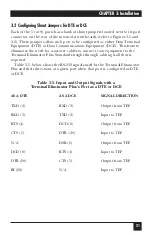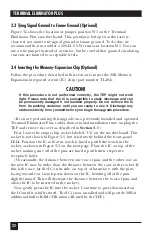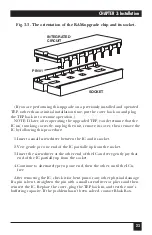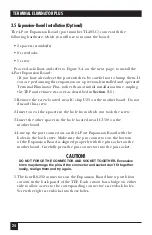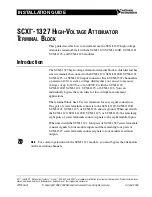
35
CHAPTER 5: Operation
5.1.2 M
ASTER
-P
ORT
S
TATUS
M
ESSAGES
If the user sets position 1 of system switch SWF to OFF, the Terminal
Eliminator Plus will send status messages to the master device. The user can
get an idea of what mode the TEP is in from some of these messages: They
show (a) that the unit has been reset or (b) a command to switch modes has
been processed. Here are all of the status messages:
“
** BEGIN LOG **
”—The TEP has been reset and is now in the standard
Concentrate mode.
“
Px CONNECTED
”—The TEP has switched from its standard Concentrate
mode to one of the Conversation modes. “P
x
,” where
x
=a number from 1 to 4
(or 8), is the selected slave port.
“
BROADCAST ONLY
”—The TEP has switched from its standard Concentrate
mode to Broadcast Only Mode.
“
DISCONNECT
”—The TEP has switched back to the standard Concentrate
mode.
“
**KEYBOARD INPUT TIMED OUT**
”—Master-input echoing is enabled
(see
Section 3.1.2.D
), the TEP is not in a Conversation mode, and the 3-
second “no-data-to-echo timeout” has occurred. This message, followed by its
two carriage returns, allows the TEP to resume sending slave data on a new
line after the user stops typing in data to echo. (When the TEP is in a
Conversation mode, no message is sent other than a carriage return allowing
slave data to resume on the next line.) NOTE: Neither the “KEYBOARD”
message nor the solitary carriage return can be disabled by setting position 1
of SWF to ON.
NOTE: All these status messages are preceded and followed by a carriage
return; all but “
** BEGIN LOG **
” are followed by two carriage returns.
After each carriage return, the TEP delays 100 ms if position 5 of SWG is set
to ON, then inserts a line feed if position 6 of SWG is set to OFF.

